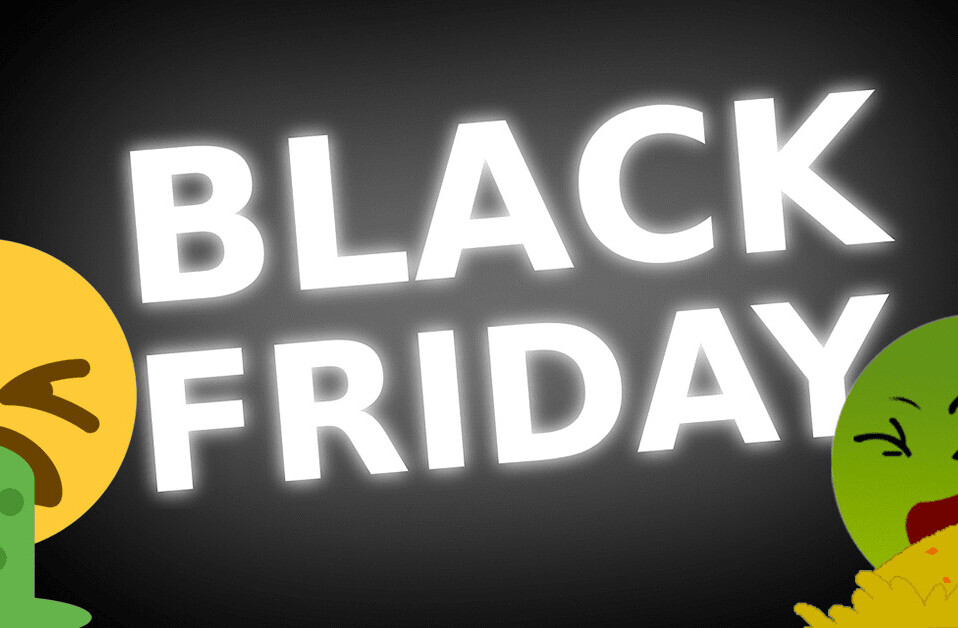
Did you know TNW Conference has a track fully dedicated to exploring how technology will shape the ever-evolving marketing landscape this year? Check out the full ‘Rebrand‘ program here.
I can’t speak for the entire digital community, but I can share my observations as well as the perspective of many I know in the industry. I hope this helps others who are feeling the same way. Many of us are uniquely attuned to news and social media updates. During a crisis, this is heightened. We have awareness on steroids.
Productivity > fear
I can’t stop consuming, feeding off every blog I find. Twitter, TikTok, Facebook, Instagram, YouTube, and LinkedIn.
I absorb all the content I can find. My brain won’t stop, won’t pause during a crisis of this scale. The sad thing is it feels like my coping mechanism. The idea of quiet stillness doesn’t sound peaceful. It sounds like an opportunity for ever-increasing dread to live. Alone with my thoughts gives my imagination free rein to imagine the worst.
Staying busy has steadied my thoughts towards what I can control instead of opening myself up to the total helplessness one can feel. It’s as if my brain has chosen productivity to drown out my fear.
Read: [Office work will never feel the same after the coronavirus pandemic]
It’s as if the more knowledge, data, and news I consume, the more control I will have. Knowledge is power. Knowledge will save us. And so my sponge keeps absorbing.
If the only way my type A personality can mentally survive lockdown, bad news, and homeschooling my kids, I guess this is where we are.
How do you unplug when you’re paid to be in the know?
Right now, many of my marketing colleagues and friends are slammed, doing more work than ever before as we try to navigate an unprecedented situation. We plan content, scrap content, perform sentiment checks, and social listening, all while being the voice of reason for brands and clients. In addition to the news and our findings, we have to know how the news will not only impact our content but the distribution channels we are using and building ads.
It isn’t enough to know what happened last week. I need to know what’s happened in the previous 24 hours and be able to figure out if and how it impacts my work and my clients.
For many of us digital marketers, we can’t unplug. Our work lives on our laptops and phones. We are paid to be plugged in, and it’s even more critical during a crisis. While a month ago, brands were able to assess brand sentiment around announcements and press releases quickly, now many brands are having to calculate where they stand on an hourly basis.
Does the stock market’s volatility impact the brand? Are any of the brand’s employees positive for COVID-19? Is the brand being asked for donations or to take action in some way? The answers are ever-evolving, and digital marketers are on the digital frontline of the public’s reactions and demands.
Many of us marketers are already in a heightened awareness of content. We can’t help but scroll through channels and ads, immediately judging the effectiveness and whether or not it’s currently tone-deaf in today’s more sensitive climate.
How can we cope?
What do you do when you can’t walk away?
Curate. Curate. Curate. You are what you consume. You can’t avoid all the negative content, but you can mute, block, or create Twitter lists specifically for the people you want to see. This is one way to ensure that when you are using platforms like Twitter for up-to-date news, you can quickly filter out the extraneous content. It creates a focused feed experience based on what you want to know about.
For Instagram and Facebook, don’t be afraid to unfollow or unfriend people if their content does not serve you what you need. It’s OK to close the door on people who are sharing misinformation or being passive-aggressive or hateful during this time. If your brain won’t stop eating everything it sees on the Internet, put it on a diet.
Use social media for entertainment. TikTok has become an oasis for entertaining and silly content. From doctors sharing information, quarantine stories, and a mix of challenges and funny content, it is a haven of distraction. A way to still be able to find content but with quick bursts. When in doubt, head to #dogsoftiktok. It’s the ultimate pick-me-up.
Vent. Get the poison out. We are stuck at home, trying to work, homeschool our kids, and watch as the world struggles to find answers and solutions. We need more than video conferences right now. That helps, but it isn’t enough. Just like we feel trapped at home, we also feel like our feelings about what is happening are and need to be trapped within us.
We don’t want to come across as someone panicking or vulnerable. We want to come across as strong, and so we bottle up our fear, our sadness, our grief, and try to fill our day with enough things to do that we don’t have the time to let all of that negativity pour out of us.
But we need to. We need to write it down or talk to a friend or family member. We need to purge that sadness and trauma out of us. We need to grieve in our own way and find out what we need to heal right now.
As marketers, we need to know the best steps to take for brands confidently, but we also need to give ourselves the grace of being OK with admitting that we don’t have all the answers — because we don’t. We are relying on empathy, trusting our instincts, and taking things a day at a time. We are collectively working to help our clients survive this crisis, but we also need to make sure that we do what it takes to ensure we don’t burn out from the added everything.
If you are reading this, I hope you and your loved ones stay safe. I hope we all make it to the other side as better humans and better marketers. I wish you a place to pour all the negativity you have out of you. You are not alone in feeling sad, feeling dread, in feeling lost sometimes. This community is here for you.
This article was originally written by Christina Garnet for Better Marketing, a publication providing advice that works and covering digital and social media marketing, tools, and case studies.
Get the TNW newsletter
Get the most important tech news in your inbox each week.





